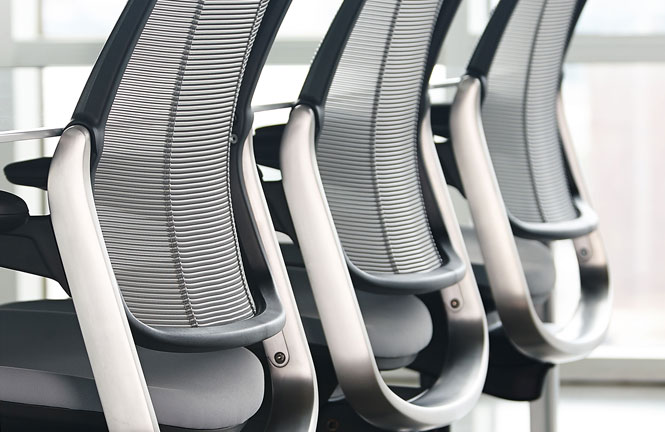
Ergonomics: “Where the design process falls short”
Ergonomics: “Where the design process falls short”
Share
“If you look at the way office buildings are designed, the architects are usually working on designing a statement – the façade, that’s their focus. Interior architects will do spatial layouts to accommodate a certain number of people. Then the interior designers come in and try to make it attractive. The IT specialists come in with the computer systems; the lighting engineer will do the lighting; the acoustics engineer, the acoustics; and so on. But nobody really looks at the details of where and how a person does their work. And that’s where the design process falls short, because that’s where people are injured in the workplace – the half-metre in front of the body, not within the grandiose statement of the building.”
Ergonomics expert Professor Alan Hedge has been working and studying the ergonomics field for the past 40 years, and has seen the rise of computers as well as the negative effects that they can have on the body. Effects that, he says, can be solved by some adjustments in the design process.
“Muscular-skeletal problems account for two-thirds of compensatable injuries in developed countries, and they occur because of how people use computers in offices,” he says. “Ergonomics hasn’t been taken seriously in the past… We do now have office guidelines, but many offices are still ignorant of them.” Hedge explains that the first standards for computer use were developed in the mid-1970s, and shockingly, a lot of organisations still apply those standards even though things have dramatically changed since then. “Companies waste a billion dollars a week on injuries that are 100 percent preventable, and we are all paying for it, paying for poor design. We know how to improve it but we don’t implement it,” he says.

Humanscale’s Diffrient Smart, designed by Niels Diffrient.
While ergonomics is largely thought of as simply the way we arrange ourselves at the computer – that classic diagram of the person sitting dead straight in their chair with everything at 90 degrees comes immediately to mind – this is an outdated myth. “Ergonomics isn’t just posture,” Hedge says. “It’s also the physical conditions – the air, the light, the noise, the vibration. They all disrupt your ability to work if they’re not optimised.”
On the topic of posture, however, sitting with everything straight all day is unattainable and unnatural, says Hedge. “If I asked you to sit down comfortably, you would sit back in the chair with a neutral posture… Your feet would be out in front of you, not straight down, and your hands would sit in your lap. You just need to then incorporate the computer into that position.”
“Ergonomics isn’t just posture, it’s also the physical conditions – the air, the light, the noise, the vibration.” – Alan Hedge, ergonomics expert
Equipment is, of course, paramount to top-notch ergonomics. You can’t just choose furniture for how it looks or costs or fits into a space. “Things like arms on a chair are important,” explains Hedge, “Arms mean that when you are getting up out of the chair, there is one-third less force on your back than if there were no arms on your chair. We have an ageing workforce, so this kind of attention to equipment detail becomes even more important.” These kinds of chairs, such as Humanscale’s Diffrient Smart or the Freedom Headrest, are widely available.
And now, we have drastic advances in equipment and technology to look forward to, advances that will help us achieve even better ergonomics, even easier. “Increasingly people are looking at how we can put sensors into the products we use. Back home in my office, I have a chair that has sensors that assess how I’m sitting, so if I get into an awkward position, that part of the chair will vibrate to alert me I’m not in a good position,” Hedge says. “Or if I haven’t been moving it will tell me. We’re starting to see desks that can assess how long you have been sitting and they will begin to move upwards when it assesses that you need to stand up. Or computer monitors that look at how you’re working and if you sit in an awkward posture, an alert will come up on the screen. We will increasingly see these products that will help us.”
So how can this history of creating workplaces that are ignorant of ergonomic qualities be broken? Incorporate it into the design process, Hedge says.
“You have to make those making the purchases aware of the benefits of ergonomics and how it all works together – we have to somehow change that part of the design timeline.”
Humanscale is an ADR adviser.
—
Read more about the modern workplace here.
You Might also Like
























